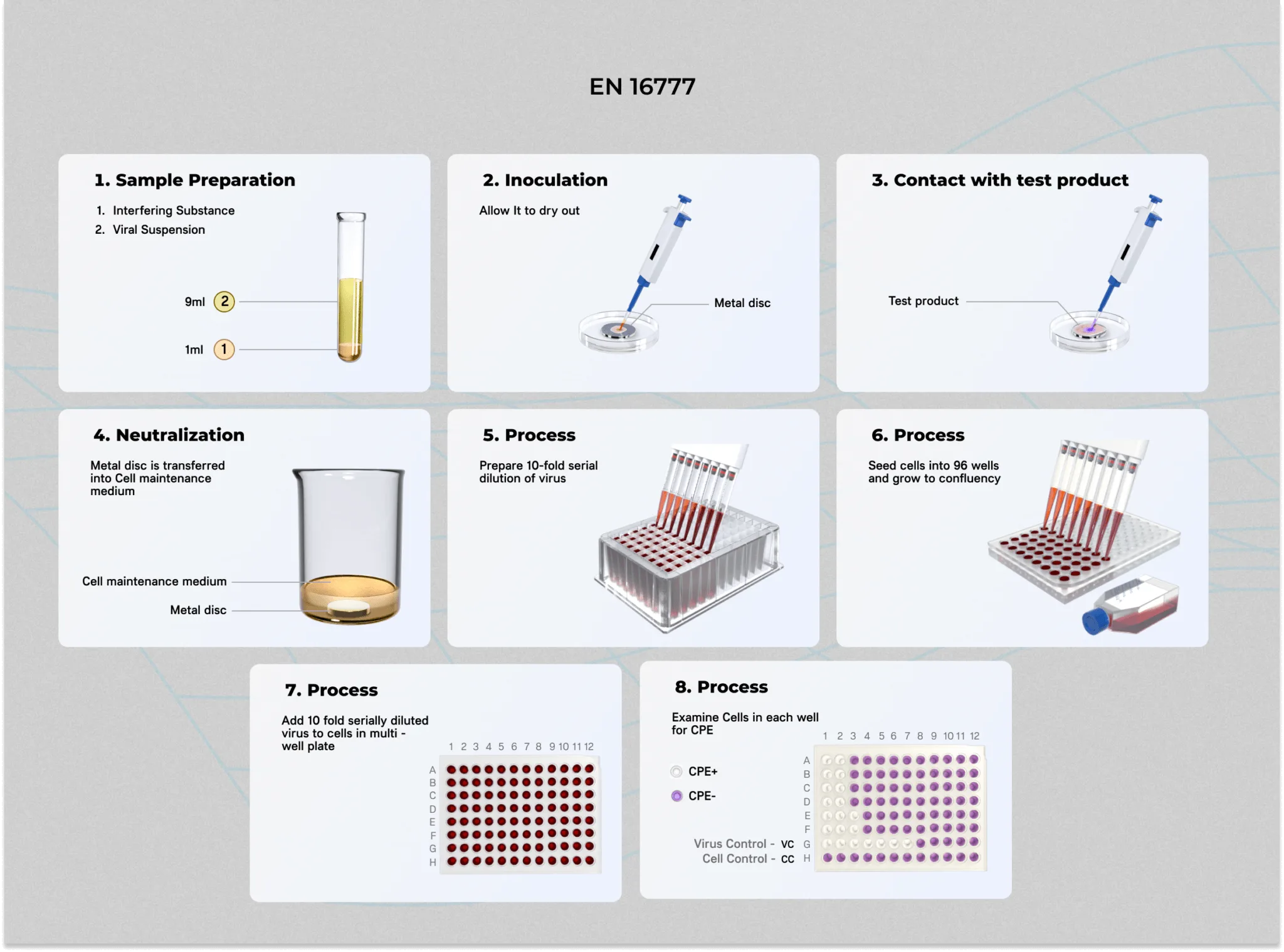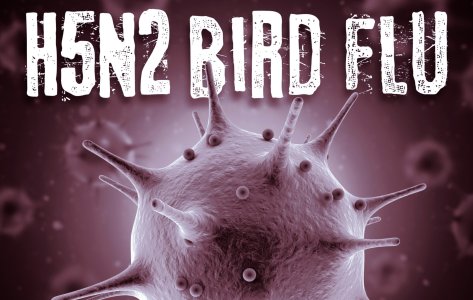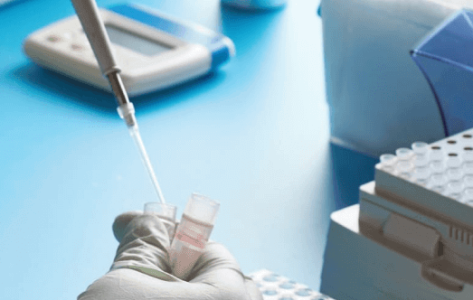- Swiss testing laboratory
BS EN 16777

Hassle-free testing experience
Need to get a product tested? No worries! To and fro logistics are on us; we collect your products, test them and, deliver them back to you.
Related tests for you
Quick understanding of the test
BS EN 16777 - Quantitative non-porous surface test without mechanical action for the evaluation of virucidal activity of chemical disinfectants used in medical area.
EN 16777 is a phase 2 step test used to evaluate virucidal activity of chemical disinfectants used in medical areas on non-porous surfaces without mechanical action.
Application
Applicable to disinfectants used in hospitals, medical centers, dental clinics, nursing homes, and school infirmaries.
- Adenovirus
- Norovirus
- Vaccinia virus
- The viral suspension with interfering substance is applied to discs and is allowed to dry.
- The dried surfaces are treated with disinfectant under specified conditions of temperature and contact time.
- After neutralization, the titre of virus inoculum is determined and reduction in virus titre is compared to the control sample.
- Validates disinfectants for effective viral pathogen reduction, ensuring hygiene and infection control in medical settings.
- Helps manufacturers develop high-quality virucidal products compliant with European standards.
Passing criteria
Do you have a product that needs testing?
Abstract
EN 16777 specifies a standardized method for evaluating the virucidal activity of chemical disinfectants on non-porous surfaces in medical settings without mechanical action. This phase 2, step 2 test involves the use of carrier as test surface and applying a virus suspension onto test surfaces, treating it with the disinfectant under controlled conditions, and subsequently assessing the reduction in viral infectivity. EN 16777 provides a quantitative assessment of disinfectant efficacy, supporting product validation for healthcare environments and ensuring reliable virucidal performance on surfaces.
While EN 14476 evaluates virucidal activity in suspension (liquid phase), EN 16777 focuses on surface testing, providing a more realistic assessment of disinfectant effectiveness on non porous surfaces in medical settings.To claim virucidal claims across different use scenarios, a product should meet the efficacy criteria of both EN 14476 (suspension test) and EN 16777 (carrier test)

EN 16777 Test Conditions and Requirements

EN 16777 Test Method (Carrier test)

- Virus suspension is mixed with interfering substances (for both dry and clean conditions) and spread over the stainless-steel disc (test surface). Then, surface is allowed to dry out.
- In the next step, disinfectant is applied on the dried inoculated test surface and kept under specific temperature and contact period times.
- At the end of the contact period, treated test surfaces are transferred into the cell maintenance medium to neutralize the reaction.
- Infectious titre of virus recovered from test surface is determined and results are compared with infectious titre of virus from control sample (discs treated with hard water).
- According to EN 16777 standard, a sample product to exhibit virucidal activity or limited spectrum virucidal activity must possess 4 log reduction in virus titre.
Importance of EN 16777
In hospital environments, chemical disinfectants play a pivotal role to reduce the risk of infections by eliminating or reducing pathogenic microbes.
Based on epidemiological studies, contaminated hospital surfaces are one of the major risk factors leading to cross-contamination and nosocomial infections.
The European Standard (EN 16777) is established to check whether virucidal agents used in chemical disinfectants are capable of destroying or inactivating viral pathogens. In addition, this test helps manufacturers to develop high-quality virucidal products that ensure proper hygiene and infection prevention.
Conclusion
At MIS, we evaluate the virucidal efficacy of chemical disinfectants using both suspension (EN 14476) and carrier (EN 16777) test methods. Our team of experts ensures that testing and analysis are tailored to the specific requirements of each product, delivering accurate and reliable results for our clients.
Partner with MIS to validate your disinfectant formulations, ensure compliance, and generate reliable evidence to support your claims.
Contact us today to discuss your EN 16777/EN 14476 testing needs.
Frequently Asked Questions

DR. Martinoz Scholtz
EN 16777 is a Phase 2, Step 2 test that evaluates virucidal activity of chemical disinfectants on non-porous surfaces, simulating real-world contamination.
EN 16777 test applies to the products used for disinfection in hospitals, dental care facilities,
medical care centres, nursing homes, and infirmaries of schools and kindergartens.
EN 16777 test takes 4-5 weeks to complete.
At Microbe Investigations, we test for EN 16777 using the following microbial strains:
SARS CoV-2 (Omicron, Delta, Wuhan variant), Betacoronavirus 1 (OC43) (ATCC VR-1558), Human coronavirus 229E (ATCC VR-740), Influenza A (H1N1) (ATCC VR-1469), Influenza A (H3N2) (ATCC VR-1679), Human Poliovirus type 1 (FLI LSc-2ab), Human Adenovirus type 5 (ATCC VR-5), Murine Norovirus (FLI S99), Vaccinia virus (ATCC VR-1549), and Feline calicivirus (FLI strain F-9).
Meet the best of the blend of
R&D, Efficacy Testing,
Innovation and Passionate
Experts at MIS.





Explore More
The re-emergence of monkeypox, a
The global threat from viral
The health threats posed by
Let’s face it, we are






